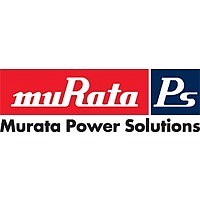CDS-1401 Datel, Inc., CDS-1401 Datasheet - Page 5

CDS-1401
Manufacturer Part Number
CDS-1401
Description
Fast-settling Correlated Double Sampling Circuit: 14-bit
Manufacturer
Datel, Inc.
Datasheet
1.CDS-1401.pdf
(8 pages)
package so they can be used to control other circuit functions.
Each S/H has two pins for offset adjusting (if required), one for
current and one for voltage.
In normal operation, the output signal of the CCD is applied
simultaneously to the inputs (pins 3 and 4) of both S/H
amplifiers. S/H1 will normally be used to capture and hold
each pixel’s offset signal. Therefore, S/H1 is initially in its
signal-acquisition mode (logic “1” applied to pin 11, S/H1
COMMAND). This is also called the sample or track mode.
Following a brief interval during which the output of the CCD
and the output of S/H1 are allowed to settle, S/H1 is driven into
its hold mode by applying a logic “0” to pin 11. S/H1 is now
holding the pixel’s offset value.
In most straightforward configurations, the output of S/H1 is
connected to the summing node of S/H2 by connecting pin 7
(S/H1 ROUT) to pin 8 (S/H2 SUMMING NODE).
When the offset+video signal appears at the output of the
CCD, S/H2 is driven into its signal acquisition mode by
applying a logic “1” to pin 12 (S/H2 COMMAND).
S/H2 employs a current-summing architecture that subtracts
the output of S/H1 (the offset) from the output of the CCD
(offset+video) while acquiring only the difference signal (i.e.,
the valid video). A logic “0” subsequently applied to pin 12
drives S/H2 into its hold mode, and after a brief transient
settling time, the valid video signal appears at pin 22 (V OUT).
Timing Notes
See Figure 2, Typical Timing Diagram. It is advisable that
neither of the CDS-1401's S/H amplifiers be in their sample/
®
(Pins 3 and 4 are tied)
START CONVERT
ANALOG INPUT
(CCD OUTPUT)
FOR CDS
OUTPUT
DATA
S/H1
S/H2
EOC
RESET
®
DATA N-1 VALID
30ns typ.
OFFSET (N+1)
90ns typ.
Figure 3. CDS-1401 in Front of ADS-CCD1201 at f
420ns
400ns
VIDEO (N+1)
73ns max.
35ns max.
OFFSET +
400ns
5
track mode when large, high-speed transients (normally
associated with clock edges) are occurring throughout the
system. This could result in the S/H amplifiers being driven
into saturation, and they may not recover in time to accurately
acquire their next signal.
For example, S/H1 should not be commanded into the sample
mode until all transients associated with the opening of the
shunt switch have begun to decay. Similarly, S/H2 should not
be driven into the sample mode until all transients associated
with the clocking of pixel charge onto the output capacitor have
begun to decay. Therefore, it is generally not a good practice
to use the same clock edge to drive S/H1 into hold (holding the
offset) and S/H2 into sample (to acquire the offset + video
signal).
S/H's that are in their signal-acquisition modes should be left
there as long as possible (so all signals can settle) and be
driven into their hold modes before any system transients
occur. In Figure 2, S/H1 is driven into the sample mode shortly
after the transient from the shunt switch has begun to decay.
S/H1 is then kept in the sample mode while the offset signal
and the S/H output settle. S/H1 is driven into hold just prior to
the system clock pulse(s) that transfers the next pixel charge
onto the output capacitor.
As soon as the transients/noise associated with the charge
transport begins to decay, S/H2 can be driven into the sample
mode. S/H2 can then be left in the sample mode until just
before the reset pulse for the output capacitor.
In Figure 2, S/H's 1 and 2 both have the same acquisition time.
If the pixel-to-pixel amplitude variation of offset signals is much
DATA N VALID
RESET
OFFSET (N+2)
CLK
= 1MHz
DATA N+1 VALID
VIDEO (N+2)
OFFSET +
CDS-1401











